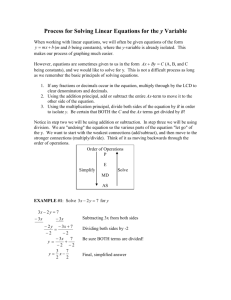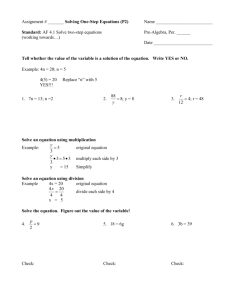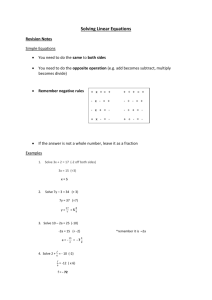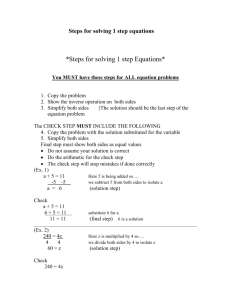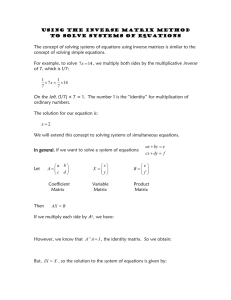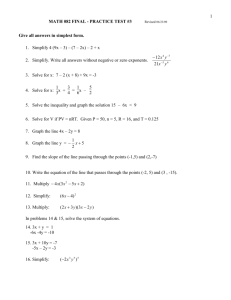Lesson #5 – Linear Combination #2
advertisement
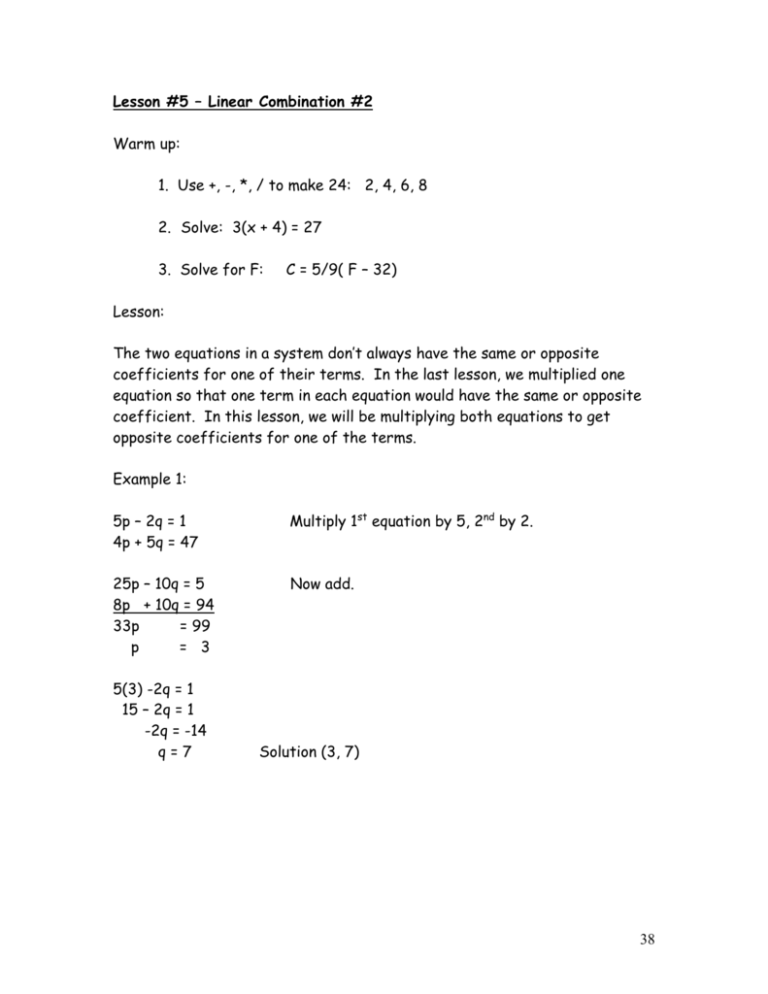
Lesson #5 – Linear Combination #2 Warm up: 1. Use +, -, *, / to make 24: 2, 4, 6, 8 2. Solve: 3(x + 4) = 27 3. Solve for F: C = 5/9( F – 32) Lesson: The two equations in a system don’t always have the same or opposite coefficients for one of their terms. In the last lesson, we multiplied one equation so that one term in each equation would have the same or opposite coefficient. In this lesson, we will be multiplying both equations to get opposite coefficients for one of the terms. Example 1: 5p – 2q = 1 4p + 5q = 47 Multiply 1st equation by 5, 2nd by 2. 25p – 10q = 5 8p + 10q = 94 33p = 99 p = 3 Now add. 5(3) -2q = 1 15 – 2q = 1 -2q = -14 q=7 Solution (3, 7) 38 Example 2: 2c – 3d = -1 3c – 4d = -3 8c – 12d = -4 9c – 12d = -9 -c =5 c = -5 2(-5) – 3d = -1 -10 - 3d = -1 -3d = 9 d = -3 Multiply 1st equation 4, 2nd by 3 Subtract the equations. Solution (-5, -3) Example 3: 3r – 2s = 15 7r – 3s = 15 9r – 6s = 45 14r -6s = 30 -5r = 15 r = -3 3(-3) – 2s = 15 -9 -2s = 15 -2s = 24 s = -12 Multiply 1st by 3, 2nd by 2 Subtract the equations. Solution (-3, -12) 39 Example 4: 4x – 5y = 3 3x + 2y = -15 8x – 10y = 6 15x + 10y = -75 23x = -69 x = -3 4(3) – 5y = 3 -12 - 5y = 3 -5y = 15 y =-3 Multiply 1st by 2, 2nd by 5 Add the equations. Solution (-3, -3) Guided Practice: 1. 3p + 4q = 4 5p + 2q = 16 2. 3x – 8y = 34 7x + 4y = -34 (4, -2) (-2, -5) 3. 2c – 7d = 41 6c + 5d = -7 (3, -5) Recap: 1. 2. 3. 4. 5. Determine which variable to eliminate. Determine by what number to multiply each equation. Multiply each equation. Determine whether to add or subtract, then do it. Substitute in to find the other term. 40


